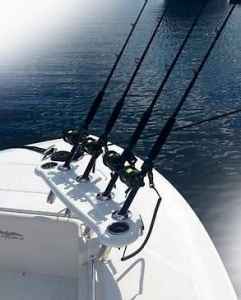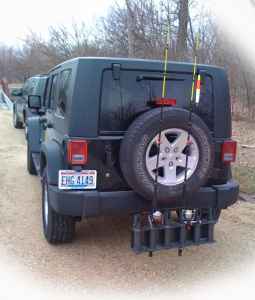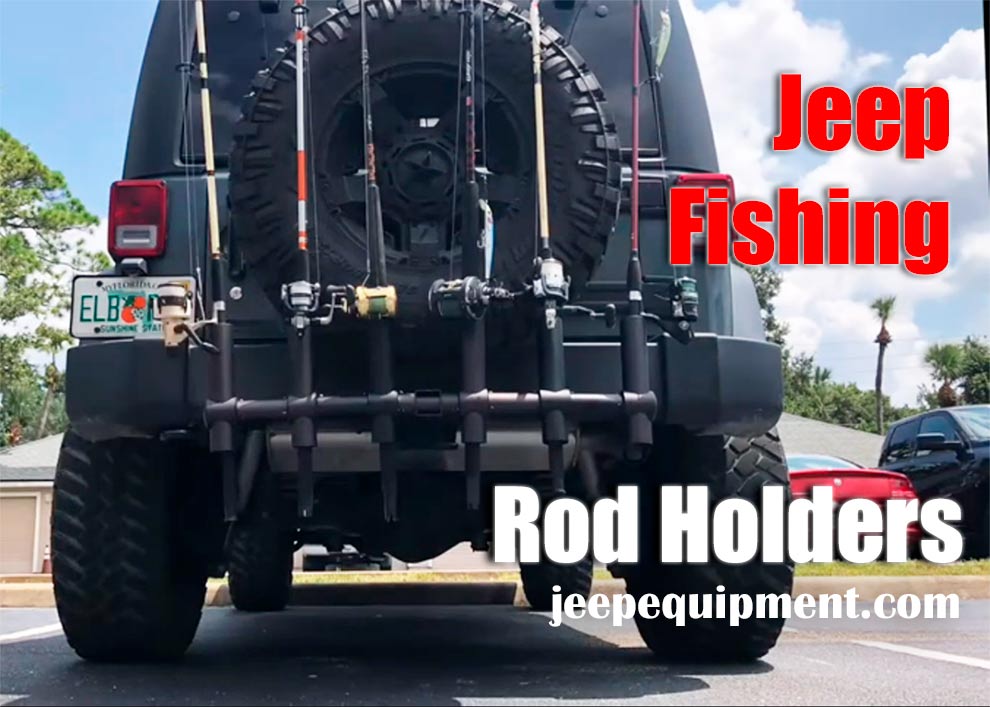So, you wanna go fishing. You’ve got the equipment ready, double-checked everything, and are ready to hit the road. But wait – where are you going to carry the rod? Put it in the back of your vehicle? Well, that’s always a possibility, but there might not be enough space back there, especially if you’re not traveling alone. Why not use Jeep fishing rod holders instead?
Specifically designed with one goal in mind – to hold the rods in place – they come at an affordable price and are very easy to mount. Will this be the right investment, though? Can you trust a holder to keep the rod(s) steady while you’re focused on the road? How much will you have to pay? What should you look for? These are just some of the topics of today’s post!
Why Use Holders in the First Place?

For a boat owner, these “devices” are very useful. First of all, because they do exactly that – hold the rods. That allows for a hands-free fishing experience, which is awesome. You can relax, take care of other things, but still be in the water and fish. And for a car driver, rod holders are all about safety, usability, and mobility. So, yes, there’s a lot to like about these things!
How Much for a Decent Unit?

And if you need 10, 12, 16, or more sockets, I’m happy to say that you’ll still be able to get that at a reasonable price. On average, 80-100 US bucks should be more than enough to buy a multi-socket rod holder for your Jeep.
Buyer’s Guide: What to look for in Rod Holders?
Alright, we just talked about the benefits of using a rod holder and also learned how much a decent socket will cost you. Now let’s take a quick look at the most important factors that turn an average product into a crowd-pleaser:
- Material quality. Hands down, aluminum and stainless steel are the best materials for rod holders. They are sturdy, reliable, long-lasting, and resistant to pretty much all the natural elements out there. However, if you want to mount the holder onto a boat, nylon or fiberglass might also be a decent option. While not as durable, these will be rather cheap.
- Again, this mostly applies to fishermen that want to install a holder on their boats, not Jeeps. If you get lucky and catch big enough fish, it will have one hell of a pull. That’s why it’s so important for rod holders to be safe. Otherwise, they might break, and maybe even hurt you. Or, the fish will literally snatch the rod away.
- Ease of Use. The vast majority of fishing rod holders are very easy to install. All you’ll need is a set of tools from the garage and a couple of screws/nuts, bolts, and washers. Compatibility isn’t an issue, either. As long as you like the style, design, and have a spot on the Jeep where you can mount the holder, you’re good.
- I mentioned this briefly in the previous section: there are lots of different options when it comes to capacity. So, make sure you know exactly how many rods you’ll be carrying around before making a purchase. For most folks, a two-rod holder will be a great fit.
What’s the Best Spot to Mount the Holder?
Last, but not least, let’s talk about the various mounting choices. Essentially, a rod holder is a bunch of metallic tubes – sockets – that need to be sturdy enough to, well, hold the rods. Therefore, if you’re good with your hands, you’ll be able to mount them pretty much anywhere on the truck. The front of the vehicle is arguably the most popular spot. With the rods “installed”, they might be blocking the view a bit, but, overall, this is a decent choice.
Plus, the gear will be very easy to remove when the fishing season is over. The rear trailer hitch is another solid option. You’ll probably have to remove the tailgate or make holes in it, though. Mounting it right on top of the spare wheel in the rear is my personal favorite. It’s very easy to do on your own and will make the Jeep look pretty cool. Some folks prefer to “stick” the holder onto the roof.
I would recommend against that, though. This method requires a lot of skills, patience, and the right tools.

Add Comment